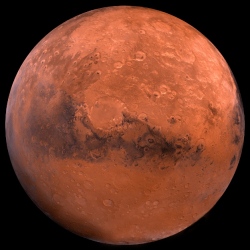
There may not be life on the surface of Mars at the present, this does not exclude the possibility that life may have thrived earlier on the Red Planet. The early history of Mars seems to have been very similar to that of Earth, especially with respect to the ancient hydrosphere.
The sedimentary structures in the Gillespie Lake Member, Mars, constitute a promising set of potential biosignatures that compel further analyses by Mars rovers, including future sample return missions from Mars. The sandstone structures on Mars look like structures created by microbes on earth.
Sandstone beds of the less than 3.7 billion years Gillespie Lake Member on Mars have been interpreted as evidence of an ancient playa lake environment. On Earth, such environments have been sites of colonization by microbial mats from the early Archean to the present time. Terrestrial microbial mats in playa lake environments form microbialites known as microbially induced sedimentary structures (MISS).
On Mars, three lithofacies of the Gillespie Lake Member sandstone display centimeter- to meter-scale structures similar in macroscopic morphology to terrestrial MISS that include ‘‘erosional remnants and pockets,’’ ‘‘mat chips,’’ ‘‘roll-ups,’’ ‘‘desiccation cracks,’’ and ‘‘gas domes.’’ The microbially induced sedimentary-like structures identified in Curiosity rover mission images do not have a random distribution.
